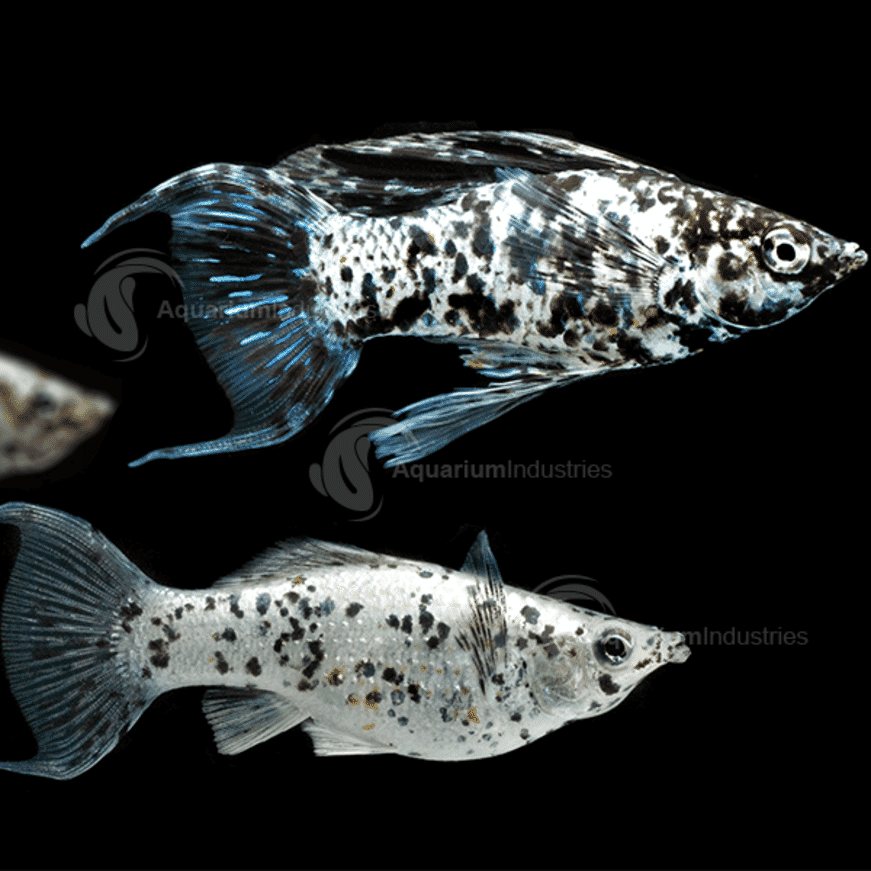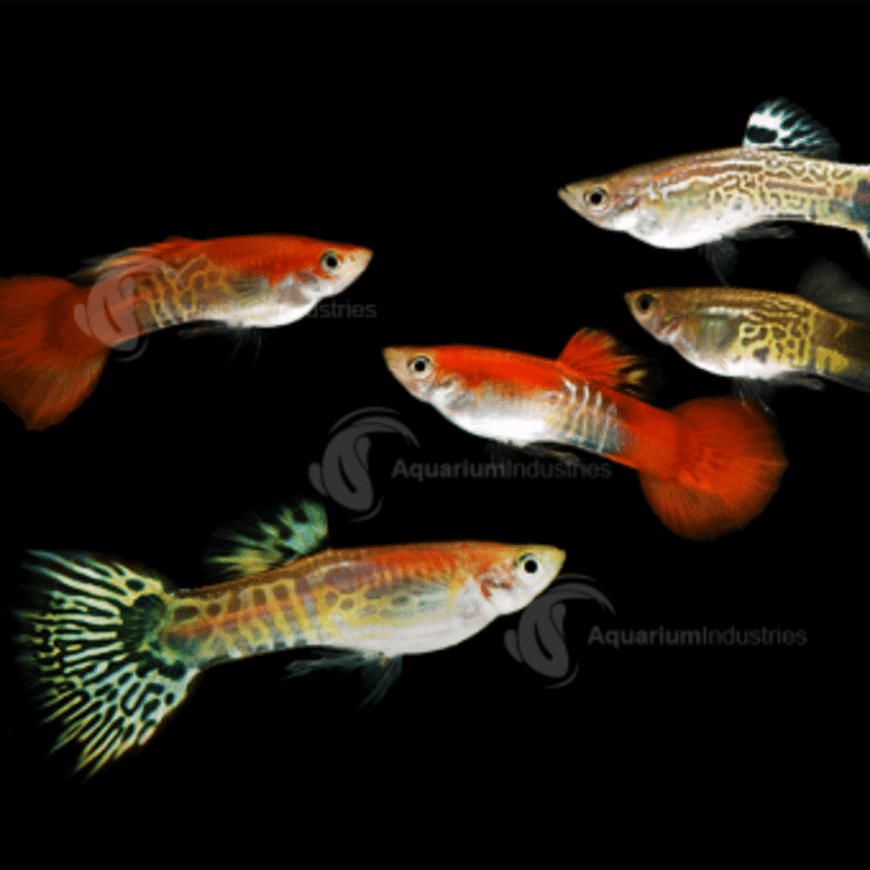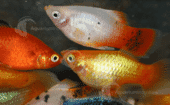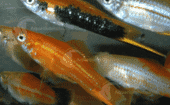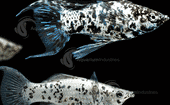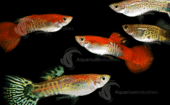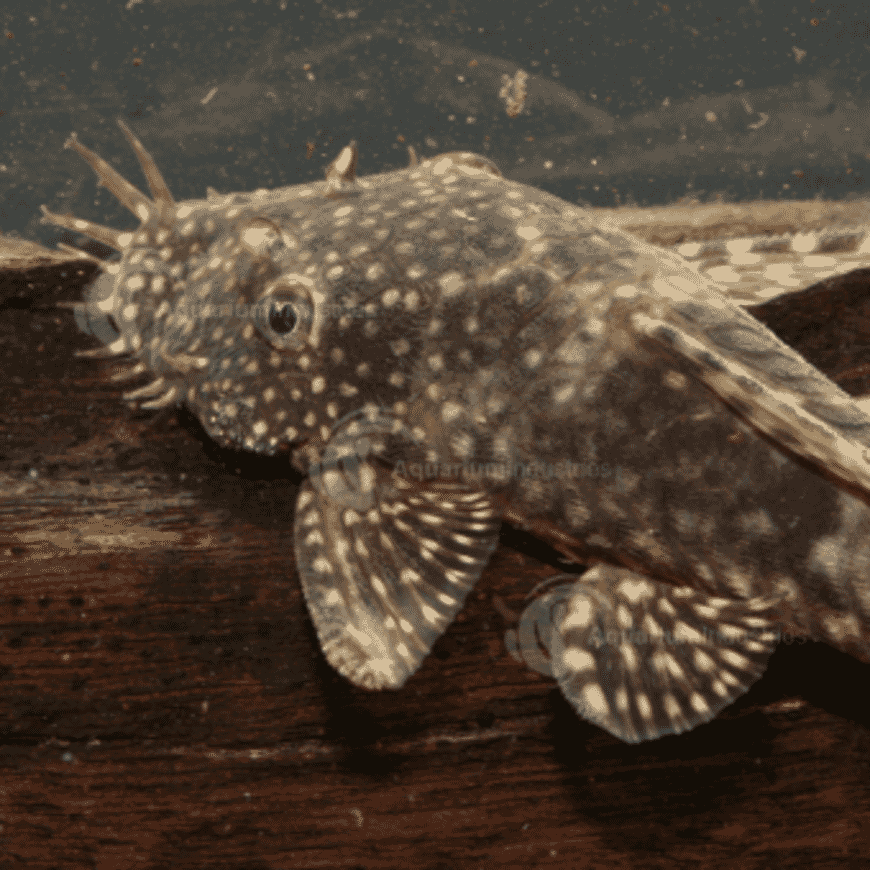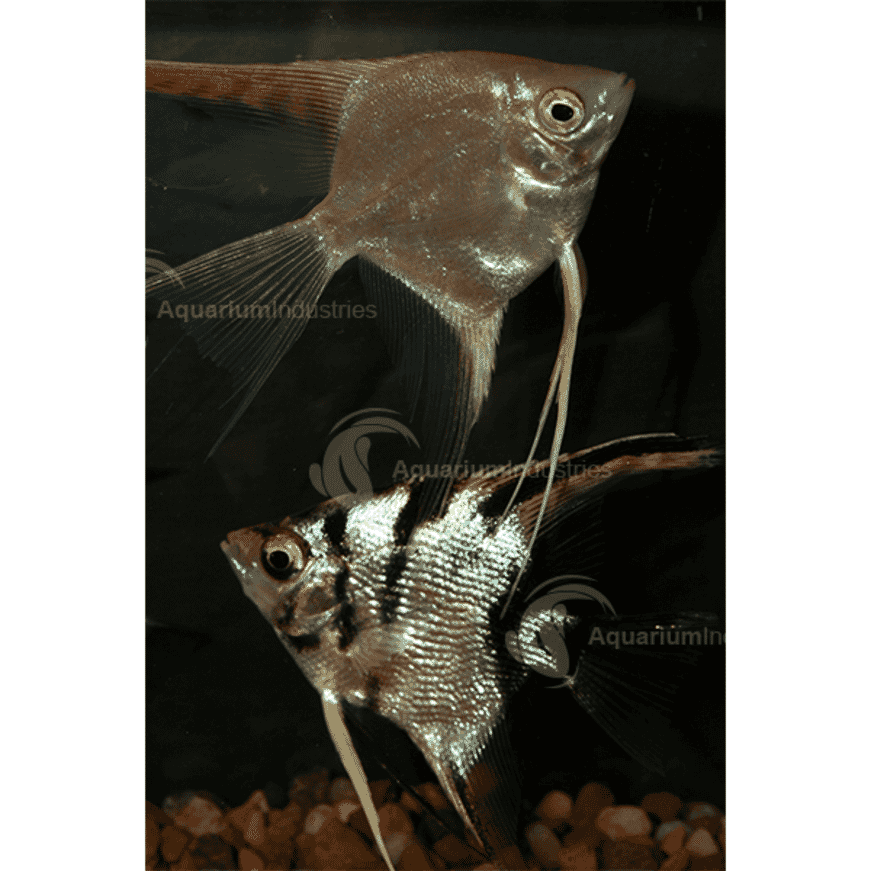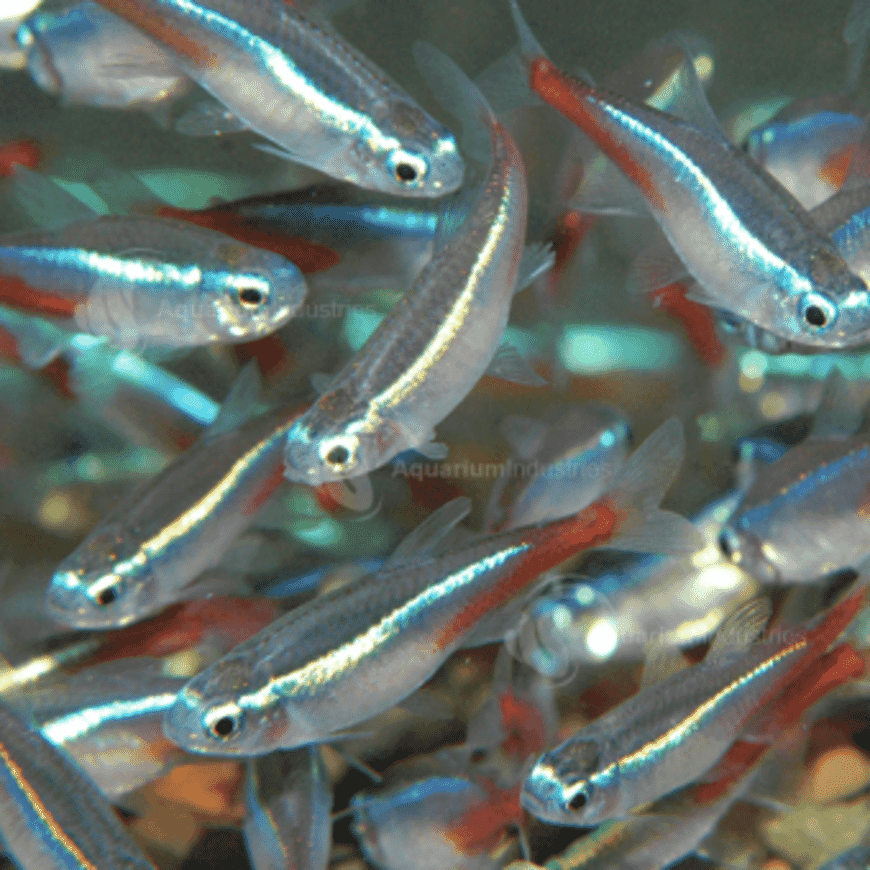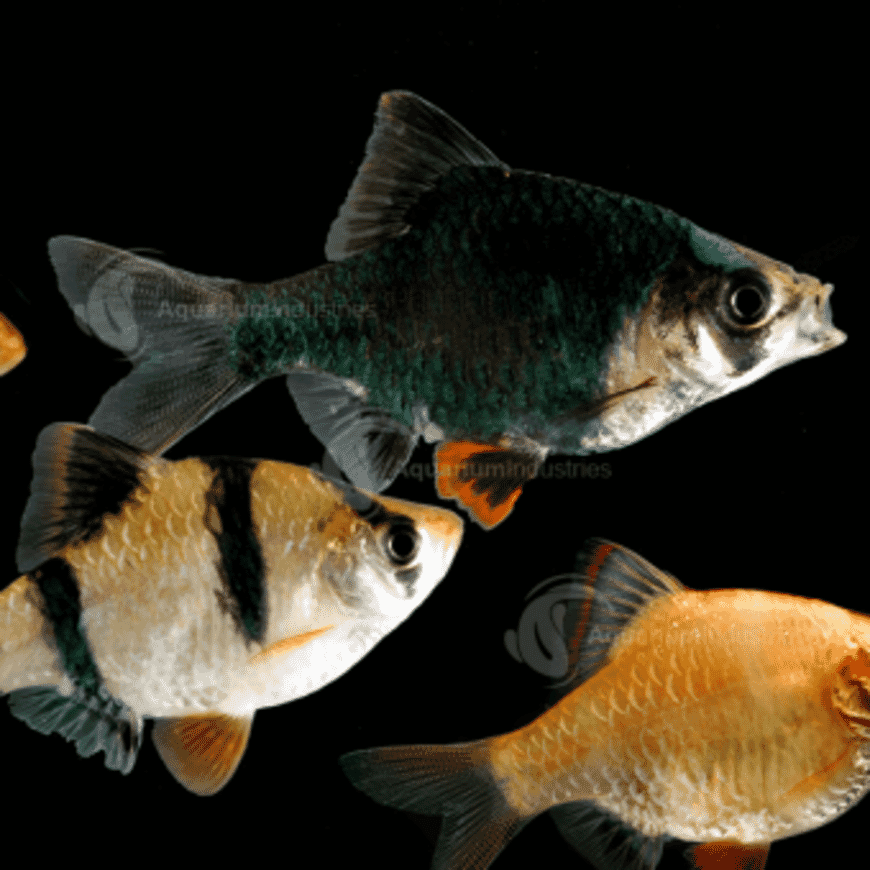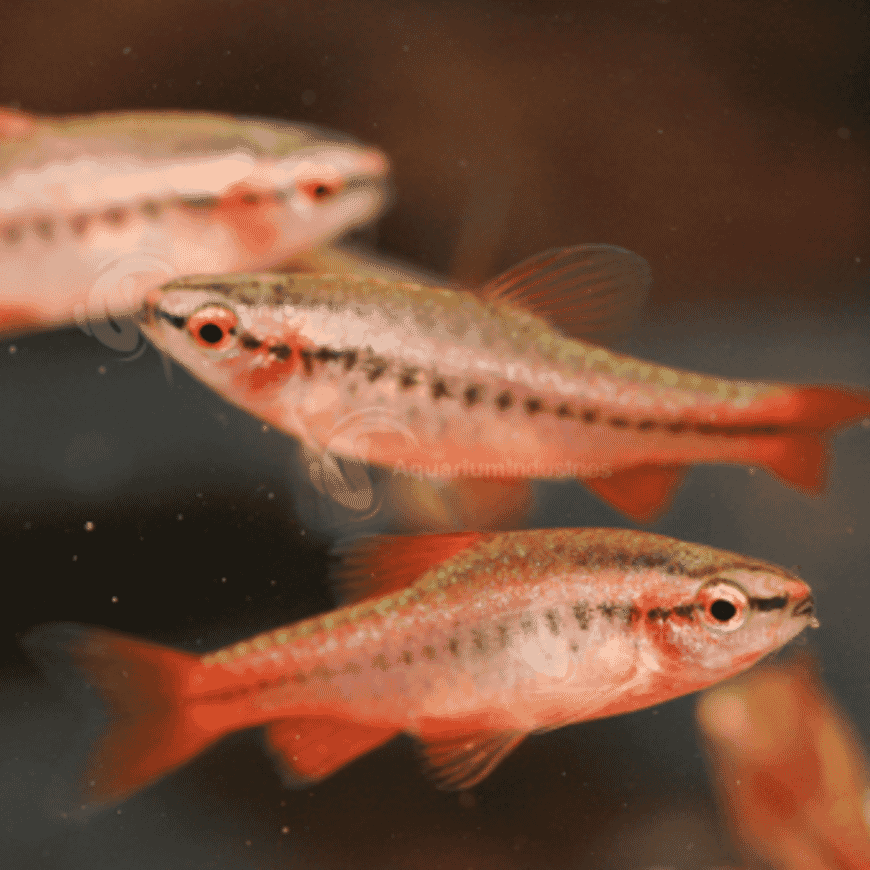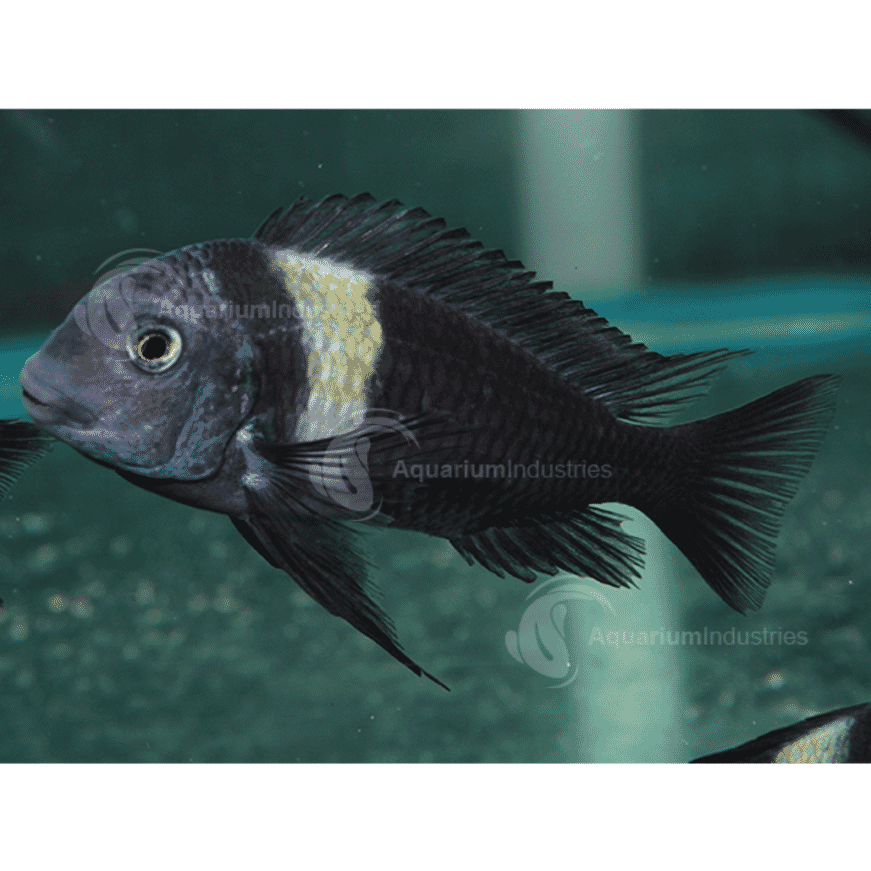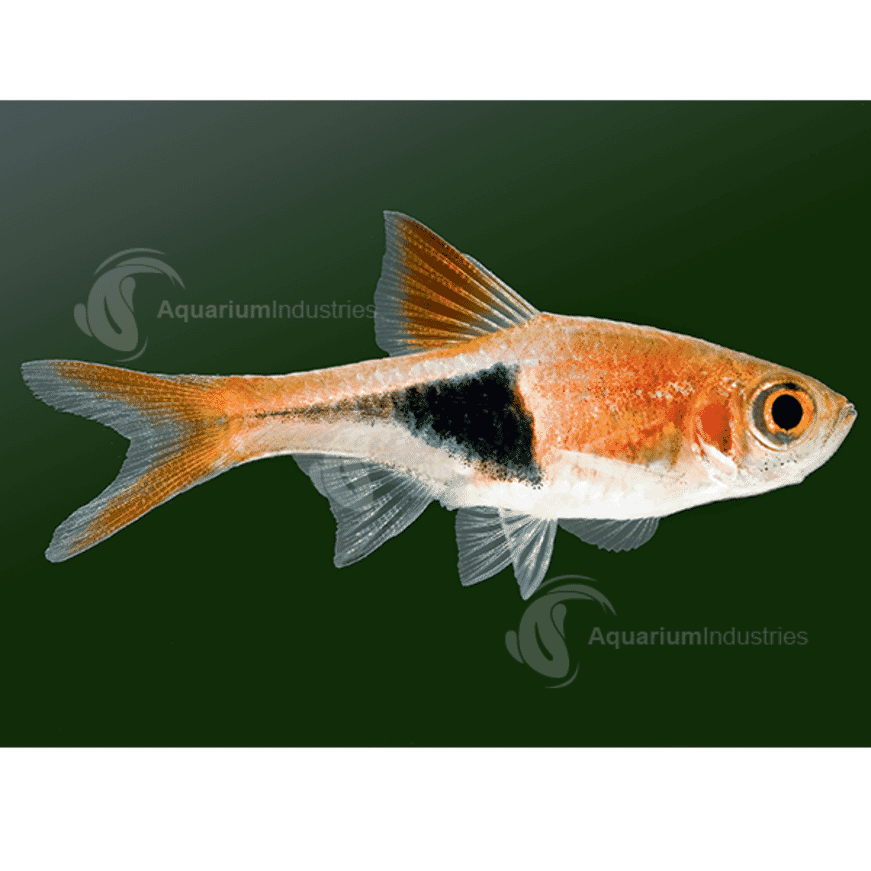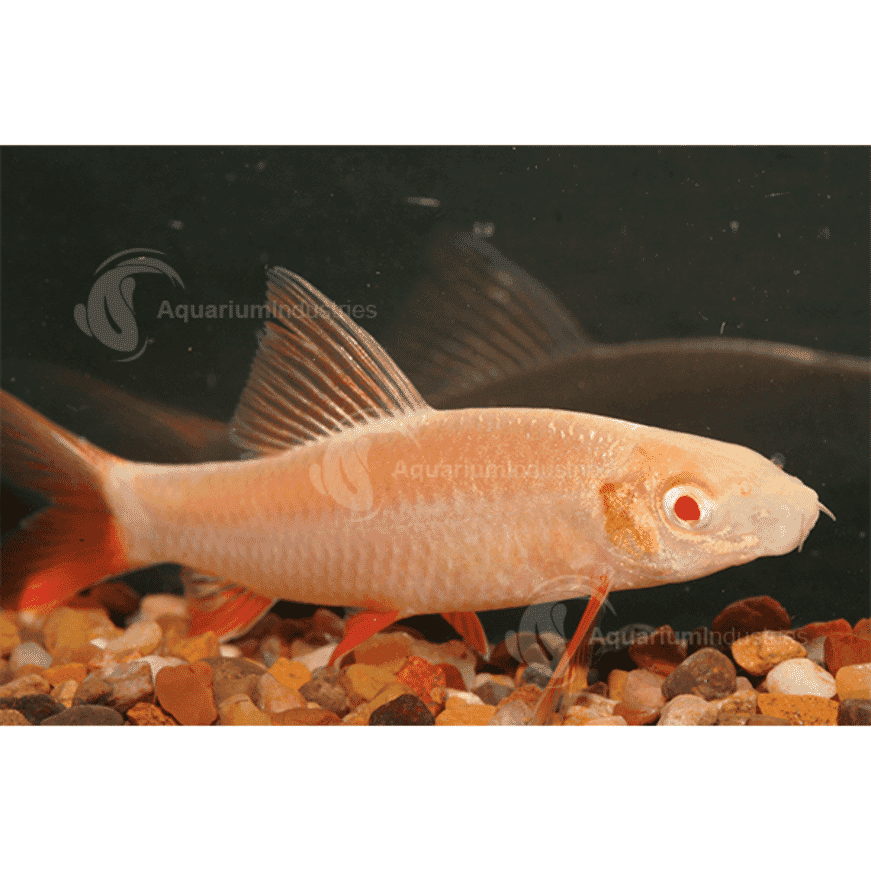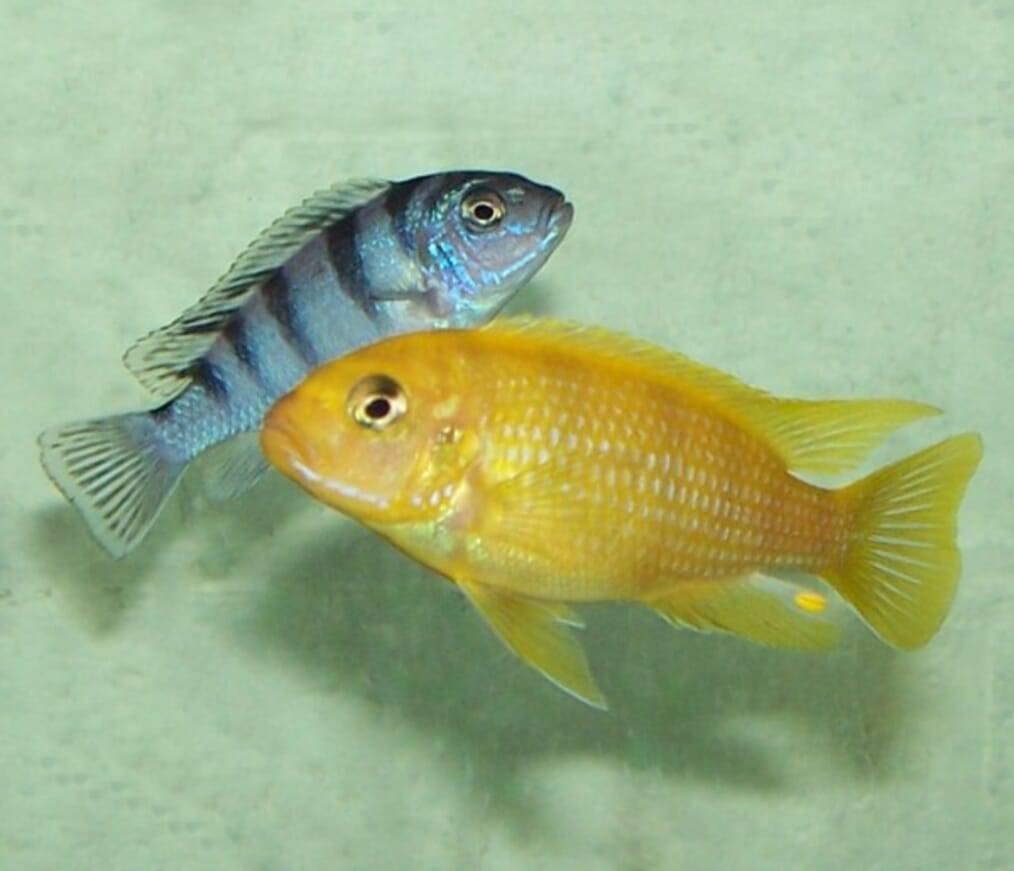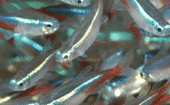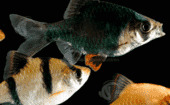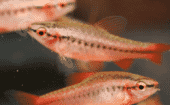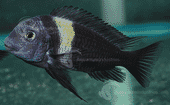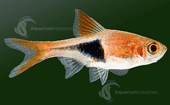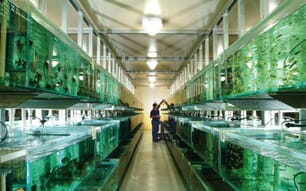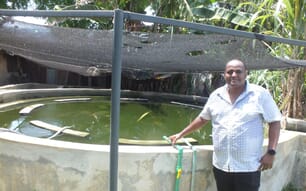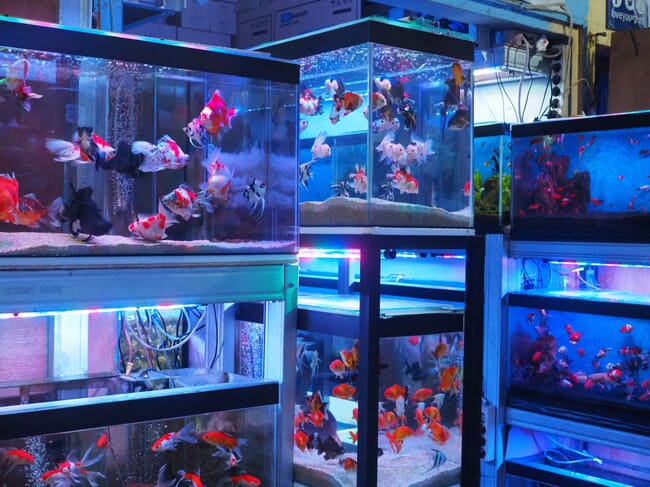
People often ask me, "What kind of work do you do?" I answer, "I raise tropical fish!" They reply, "No, what kind of work do you do?” Ornamental aquaculture is work, a job, a business, and a passion!
Business types
Here are the main business types. Choosing one depends on the investment level, location, land area, water supply and technical/management expertise of the owner.
1. Livebearer farm
This type of farm produces fish that give birth to live fish (fry), such as mollies, swordtails, platys and guppies. Spawning occurs in the pond; there is no need for hatchery facilities. Most livebearer farms are owner-operated, using low-tech methods. Harvests and deliveries require casual staff. The main buyers are shippers (see below).
2. Egg-layer farm
This farm produces fish that lay eggs, which subsequently hatch into fry. They require facilities to house broodstock, spawning tanks, and fry rearing tanks. Fry are stocked and grown in outdoor ponds or indoor tanks. Some species can spawn in the ponds, but production numbers are low. Egg layers include many groups of species, for example, catfish, barbs, tetras, gouramis, and cichlids. They require mid to high technology, managed by experienced staff.
Skilled technicians perform the breeding, feeding, pond and disease management, and harvests. Skilled and unskilled labour perform sorting, packing, and shipping. The turnover for Egg layers is fast, and the profit potential is higher than Livebearers, even with the cost of the facilities, harvesting crews and more frequent pond preparation. Small- to medium-sized egg layer farms sell to shippers.
3. Combination farm
A combination farm is simply a farm that produces both livebearers and egg-layers. They are usually large farms that sell to shippers.
A unique combination farm grows freshwater and marine ornamentals, requiring fresh and saltwater sources and RAS.
4. Combination farm/shipper
In addition to producing a large number and variety of fish, these farms sell directly to wholesalers, retailers, and other shippers. They will occasionally trade fish with other farms to complete orders.
5. Farm/shipper, with imports
In addition to buying and reselling farm-raised fish, these shippers directly import farm-raised and wild-caught varieties or buy from in-country importers. Government biosecurity and quarantine offices located near airports regulate imported fish. Time in quarantine varies by country and could be 1 to 4 weeks.
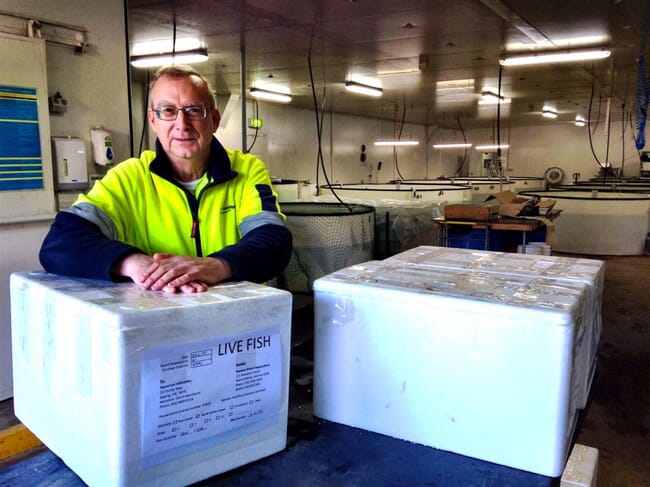
© Ian Bail Wannon Water
6. Shipper
Some shippers do not raise any fish. They buy farmed fish, imports, and sell to wholesalers, retailers and for export. The most successful shippers have a complete product list that enables customers to get everything they need from one supplier.
The advantages and disadvantages of egg-layer and livebearer production
Egg-layers: advantages
- There are hundreds of species, sizes, and varieties.
- Farms may specialise in certain groups, for example, barbs and tetras.
- Egg-layers can be grown both in ponds and indoor tanks.
- Smaller-sized fish are sold, with certain exceptions (gouramis, cichlids).
- Production numbers per unit are 5 to 10 times that of livebearers
- High stocking densities are possible.
- Fast and uniform growth, harvested in 3 to 4 months.
- Requires some grading, sorting and culling.
- Unlike livebearers, there is only some fish rejected.
- All-in-all out management, with more frequent pond and tank sanitation.
- Broodstock are easy to maintain in either indoor tanks or outdoor ponds.
- It is easy to promote individuals to broodstock in a short time or purchase from other farms or shippers.
- Some species can breed in ponds, but production numbers are low.
- Some can tolerate low oxygen by breathing from the surface diffusion layer.
- Some have accessory breathing organs (gouramis and catfish).
- Plecostomus catfish can be polycultured with some egg-layer species, increasing pond production.
- Some serve as tank cleaners (catfish and Plecostomus).
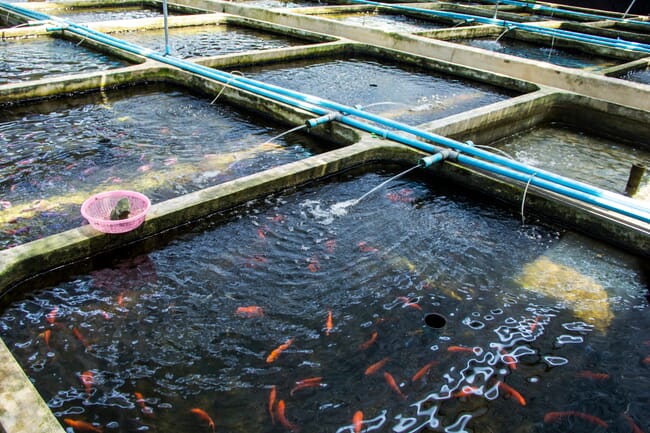
Egg-layers: disadvantages
- Requires a sizeable investment in hatchery facilities, from solid structures to inexpensive greenhouses and shade-covered outdoor tanks.
- Fewer varieties for each species.
- Many species are delicate and require special care and handling.
- In general, they are less hardy than livebearers.
- Some males are more colourful than females and require a ratio of 1 male to 2 females for orders (rosy barbs).
- Pond harvesting must be done by two or more staff, increasing labour costs.
- Some species must compete on price with low-cost imports (neon tetras, dwarf gouramis).
- Some require hormone-induced spawning (sharks).
- Selling many species requires extensive holding and shipping facilities.
- Pond covers are essential for most species in temperate climates (winter temperatures below 20C).
- Some are sold at only one size.
Livebearers: advantages
- They are easy to produce.
- A good beginner fish for hobbyists.
- There are many varieties for each species (fancy guppies, lyretail mollies)
- Livebearers can be grown both in ponds and indoor tanks, but ponds produce the best colour.
- Ponds can be large and irregular shaped, as seining is not required.
- One person can harvest ponds using fish traps, thus reducing labour costs.
- Broodstock are stocked directly into outdoor ponds for both spawning, fry rearing, and grow-out.
- Most can tolerate low oxygen by breathing from the surface diffusion layer.
- Easy to promote individuals to broodstock from own stock or purchase from other farms or shippers.
- Hardier than most egg-layers.
- Most can tolerate low temperatures and do not require covers.
- Most are sold at one uniform size.
- Some sold at larger sizes, outcompeting imports on price.
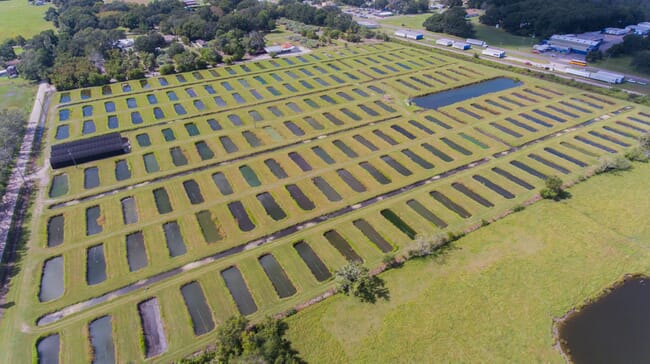
© Marty Tanner, Aquatica Tropicals
Livebearers: disadvantages
- Species breed in ponds with low production numbers.
- Lower stocking densities.
- Multiple ages and sizes exist in the ponds at the same time.
- Requires grading by size, with undersized fish returned to the pond.
- Most varieties tend to revert to unsellable wild colouration.
- Most require culling for quality and selection of new broodstock
- If there are no tannins in the pond bottom soil, colouration may be poor (red varieties).
- Culled fish must be discarded or sold as lower-priced feeder fish (except for swordtails which are too large for feeder fish).
- Livebearers cannot be held long (less than three days) in tanks.
- Livebearers quickly foul the holding tank water, requiring frequent water exchanges.
- Susceptible to bacterial infections.
- Slow growth, harvest begins after 4 to 6 months.
- Infrequent pond draining and cleaning (after 1 to 2 years) increases waste and disease-causing parasites and bacteria.
- Swordtails require a ratio of 25 males to 75 females for shipping (the “spike” or sword on the males).
- Have fewer varieties and most are sold at one size.
Here are some ideas on choosing species and varieties:
Egg-layer species and varieties outnumber livebearers by a factor of 5 to 1. The average egg-layer farms produce at least 100 species or varieties, and livebearer farms about 20.
The farm area and the number of ponds determine the number of species and varieties you can produce. A good benchmark is 3 to 4 ponds (typically each pond 10m by 20m) per species and variety. For 100 egg-layer species or varieties, you need at least 300 ponds. For 20 livebearer varieties, you need 60 ponds. For indoor tanks the number varies based on tank size from 1,000 m3 to 10,000 m3.
So how do you choose which ones to produce? It takes trial and error over time, knowing your interests, experience, market demand and the size of your farm. To help in your selection process, prepare a list of all the livebearer and egg-layer species and varieties you want to grow.
At the farm
Difficulty
How difficult is it to manage: the broodstock, spawning, fry rearing, and grow out? Do you have the expertise, or can you hire experienced consultants, managers and technicians?
Costs
Capital costs. Is it necessary to dig a well and install a pump? Will you need a hatchery, fry tanks, dispatch? What special feeds and spawning tools are required? Do you need equipment like pumps, tractors, blowers, heating, and cooling? Do you have to cover ponds with greenhouse plastic over winter?
Operational costs. What special feeds and spawning tools are required? What are the power requirements for pumping and aeration? What are the labour costs, including what you, as an owner, will take as a salary?
Production
How do you determine the current industry production numbers of each species/variety? Talk with other farmers, industry leaders, shippers and wholesalers who may give you a good idea. An easy way is to request a weekly availability and price list from the farms in your area. You will get an idea of what they are producing, what prices they are asking, and if they have an oversupply of certain varieties. When many farms grow the same common varieties, there is a good supply and a high demand. If only a few farms grow the same items, it means either a small demand or production difficulty. There may be a limited market for new species, and that must develop over time. If you want to grow common imported varieties, you will have to compete with import quality and low prices.
Competition
Contact industry associations, and government extension agents, to find out the number of farms growing the targeted varieties.
Sales
Numbers. To get current sales figures will be difficult. You can get a good idea by talking with industry leaders, government extensions agents, and wholesale and retail shops.
Price. Check trade journals, government reporting, local shippers, wholesalers, and retail shops for current prices. Prices have been very stable over the past decades, with only minor fluctuations due to disease, natural disasters, and shortages. The trend in the industry in most commodities is declining prices and increasing costs.
Here is a simple way to answer the questions above. Use the following broad rating scale. This scale is highly subjective and varies with industry insiders, current production, and markets. Get as much information as you can before the rating exercise. Bottom line: what species are you interested in, and can you produce it in large numbers?
Very low – Low – Medium – High – Very high
Freshwater (examples only)
Farm | Sales | |||||
Egg layers | Difficulty | Costs | Production | Competition | Numbers | Price |
Plecostomus, common | M | M | H | M | VH | M |
Plecostomus, rare | VH | M | L | L | VL | VH |
Angelfish | H | VH | L | L | L | H |
Cichlids, Africans | M | M | M | L | M | VH |
Cichlids, S American | L | L | L | L | L | L |
Neon tetras | VH | VH | L | L | VH | H |
Black widow tetras | M | M | M | M | M | M |
Tiger barbs | M | M | M | M | H | M |
Blue gourami | M | M | M | M | H | M |
Sharks | VH | VH | L | L | L | H |
Corydoras catfish | H | H | L | L | M | M |
Zebra Danios | L | L | M | M | VH | L |
Livebearers | Difficulty | Costs | Production | Competition | Numbers | Price |
Red swordtail | M | L | M | M | H | M |
Black mollies | L | L | M | M | L | L |
Blue platys | L | L | L | M | L | L |
Feeder guppies | L | L | L | M | H | L |
Fancy guppies | H | H | L | L | L | H |
Sunset Variatus | L | L | L | M | L | L |
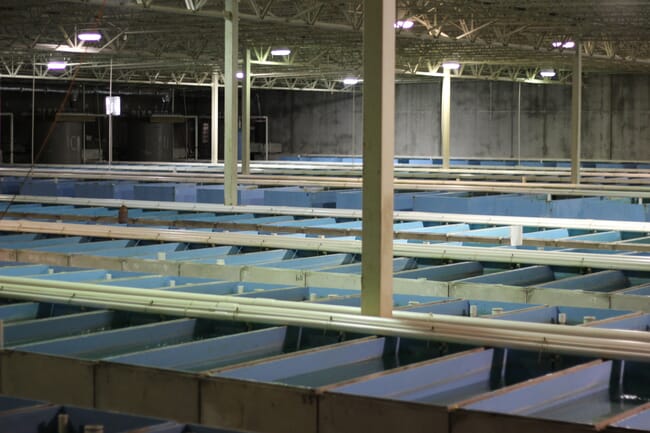
© Marty Tanner
What fish are on your list?
Here are my top lists for freshwater ornamental fish (based on customer popularity, sales, and production numbers). This list is only partial and will vary by country. The species are listed in no particular order.
Here are my top 10 species and varieties:
- Goldfish
- Koi
- Neon tetra
- Angelfish
- African Cichlids
- Tiger Barbs
- Red Tail Black Sharks
- Plecostomus catfish
- Fancy Guppies
- Red Swordtails
Here are my Top Livebearers species and varieties:
Mollies
- Black
- Albino
- Silver
- Dalmatian
- Gold
- Gold Dust
- Marble
- Balloon varieties
- Sailfin varieties
- Lyretail varieties
- Mini varieties
Platys
- Red
- Blue
- Black
- Salt and Pepper
- Panda
- Wag varieties
- Tux varieties
- Mickey Mouse varieties
Variatus
- Green
- Sunset
- Rainbow
- Red Tail Blue
Swordtails
- Red
- Red Comet
- Black
- Painted
- Pineapple
- Green
- Brick
- Peppermint
- Wag varieties
- Tux varieties
- Lyretail varieties
Guppies
- Fancy varieties
- Feeders
-
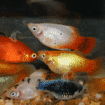
Platys © Aquarium Industries
-
![]()
Swordtails © Aquarium Industries
-
![]()
Mollies © Aquarium Industries
-
![]()
Guppies © Aquarium Industries
Here are my top egg-layers species and varieties:
Danios
- Zebra
- Blue
- Pearl
- Giant
- Leopard
- Gold
- Long-fin varieties
Barbs
- Tiger
- Green Tiger
- Albino
- Rosy
- Cherry
- Tinfoil
- Long-fin varieties
- Neon varieties
- Blushing varieties
Gouramis
- Blue
- Gold
- Opaline
- Platinum
- Dwarfs
- Pink Kissers
- Pearl (Leeri)
- Bettas
Tetras
- Black Neon
- Neon
- Cardinal
- Lemon
- Glowlight
- Black
- Red Minor (Serpae)
- Blood Fins
- White
- Von Rio
- Silver tips
- Penguins
- Head and Taillights
- Red Eyes
- Long-fin varieties
- Albino varieties
Sharks
- Rainbow
- Red Tail Black
- Albino Rainbow
- Bala (Silver)
- Iridescent
Angelfish
- Silver
- Gold
- Marble varieties
- Lace varieties
Catfish
- Plecostomus
- Bristle-nose
- Corydoras
Cichlids
- South American
- African
Rasboras
- Harlequin
- Scissortail
-
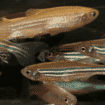
Danios © Aquarium Industries
-
![]()
Bristlenose catfish © Aquarium Industries
-
![]()
Angelfish © Aquarium Industries
-
![]()
Neon Tetras © Aquarium Industries
-
![]()
Tiger barbs © Aquarium Industries
-
![]()
Barbs © Aquarium Industries
-
![]()
Cichlids © Aquarium Industries
-
![]()
Rasboras © Aquarium Industries
-
![]()
Golden shark © Aquarium Industries
-
![]()
Cichlids © Wikicommons
Here are a few “golden rules” to remember:
Aquaculture is the art and science of raising aquatic plants and animals. Be creative but base it on science.
To get started, be sure to check with regulators like fisheries departments, environmental agencies and local governments.
Get the help you need, don't try to go it alone. Family members, partners and local schools can help until you are ready to proceed on a larger scale.
- The goal of ornamental aquaculture: produce the maximum number of fish of marketable size in the shortest time.
- Be obsessed with quality, but numbers pay the bills.
- You cannot call yourself an “aquaculturist” until you have killed a million fish...that's experience.
- Only hire staff who already have achieved their million
- If you can't measure it, you can't manage it.
- “Fish sense” is common sense that always has the fish’s well-being in mind.


